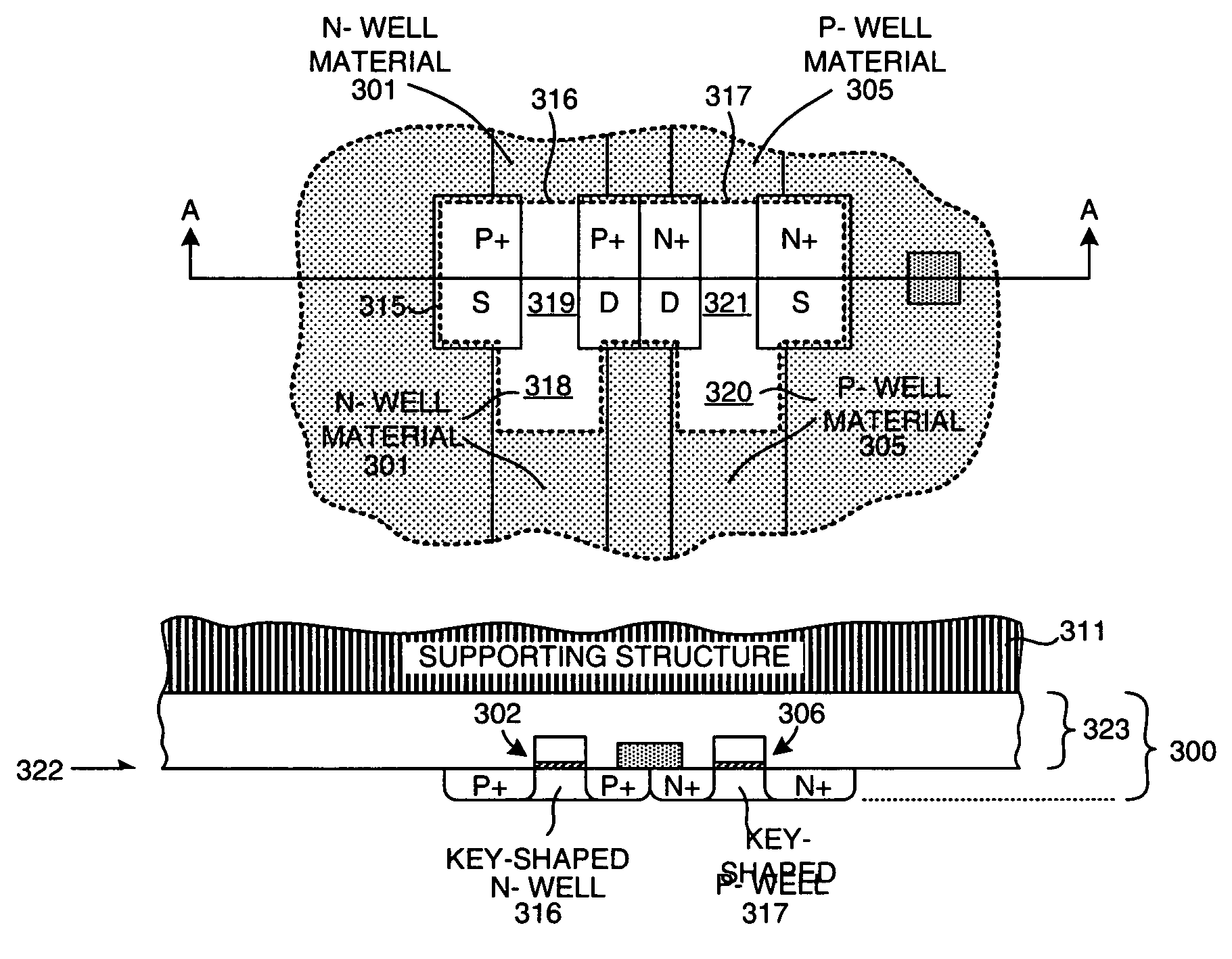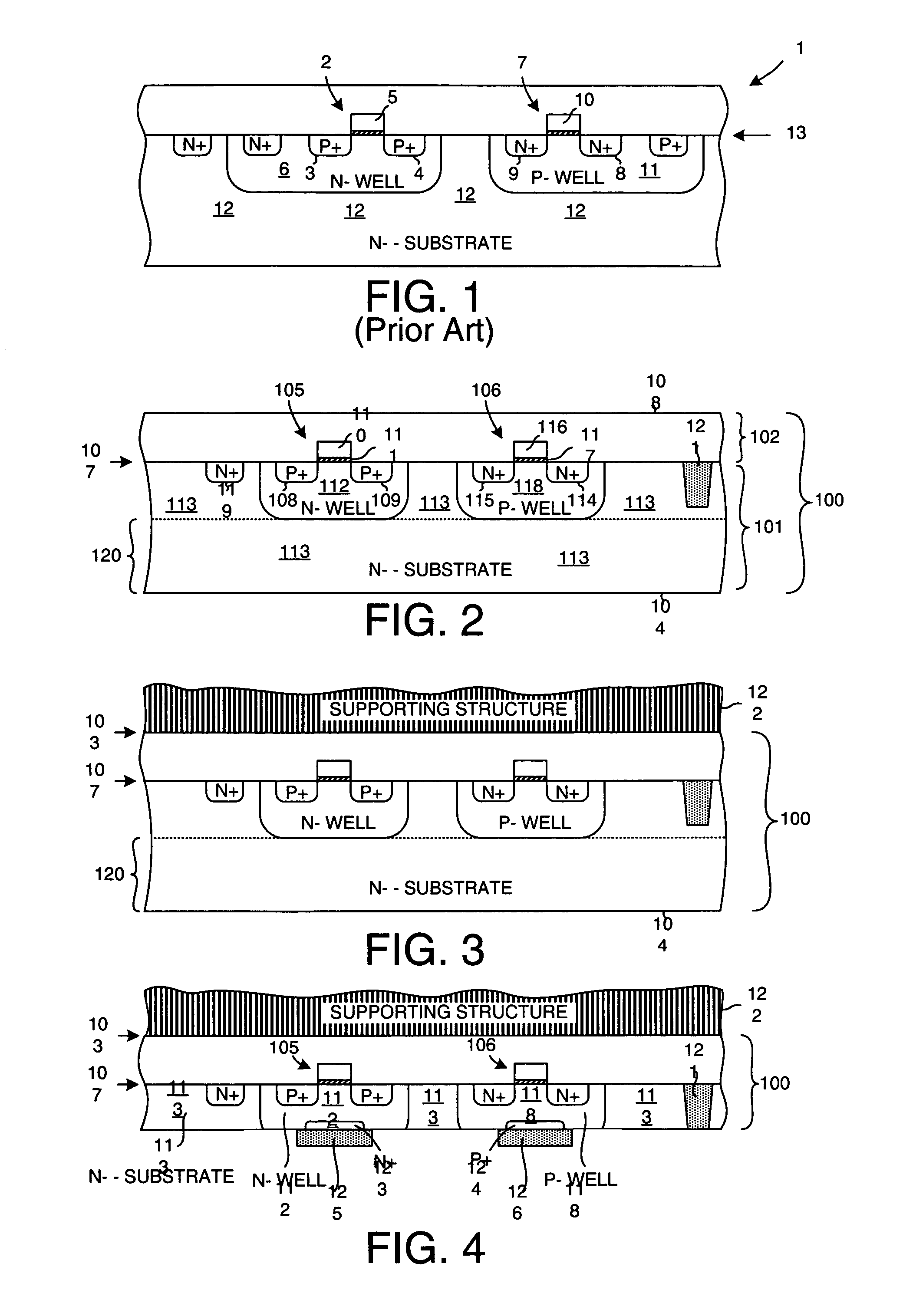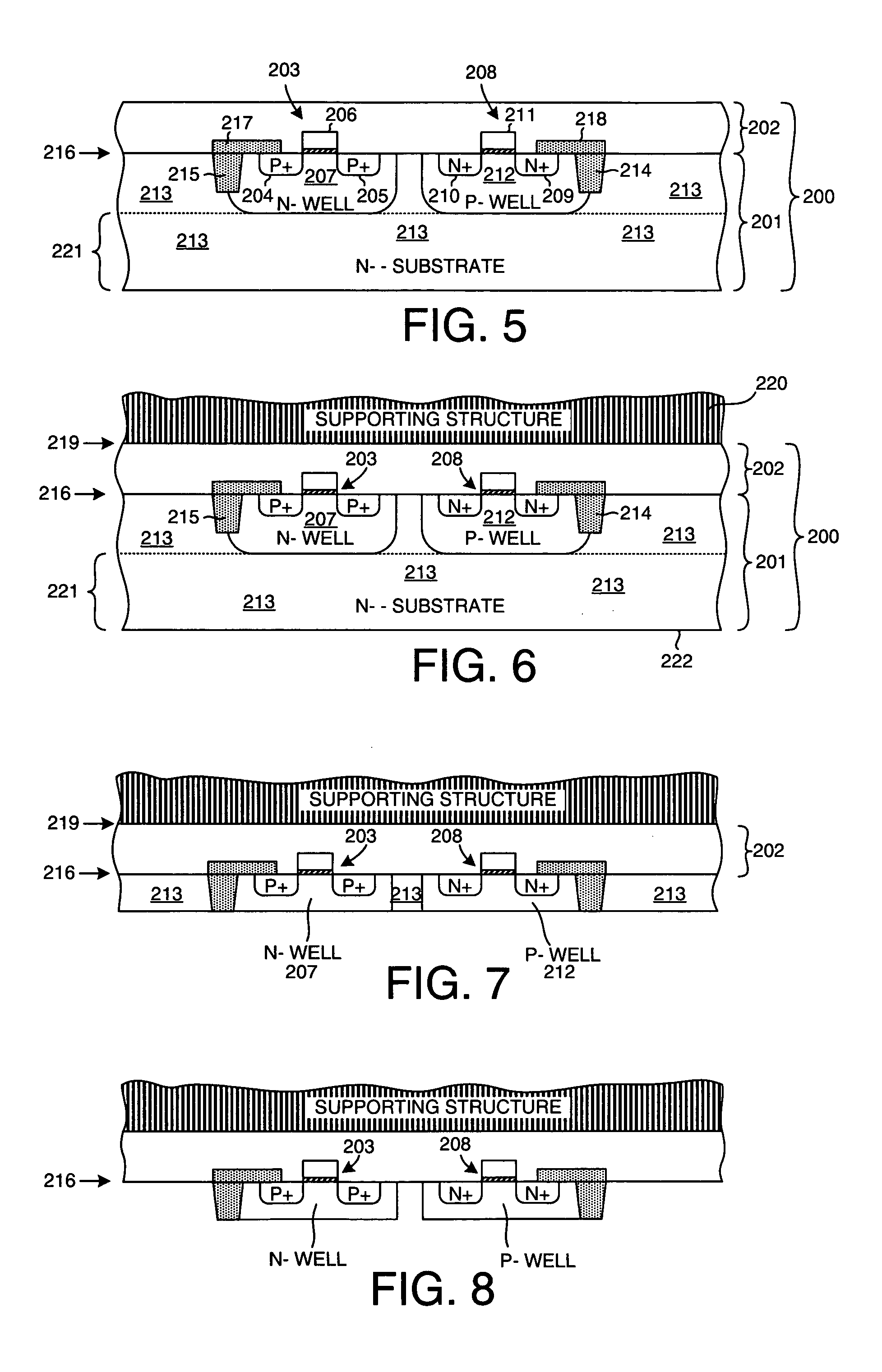Bond and back side etchback transistor fabrication process
- Summary
- Abstract
- Description
- Claims
- Application Information
AI Technical Summary
Benefits of technology
Problems solved by technology
Method used
Image
Examples
Embodiment Construction
[0043]FIG. 2 is a simplified cross-sectional diagram of a device wafer 100 in an initial step of a first method. Device wafer 100 includes a semiconductor wafer portion 101 and an overlying interconnect portion 102. Device wafer 100 has an upper face side surface 103 and a back side surface 104. Device wafer 100 is, in this example, a wafer of monocrystalline silicon.
[0044]A first transistor 105 and a second transistor 106 are formed on and into an upper surface 107 of the semiconductor wafer portion 101 of device wafer 100. First transistor 105 is a P-channel MOS field effect transistor having a P-type source region 108, a P-type drain region 109, and a gate 110. A channel region exists between source region 108 and drain region 109. A thin thermal oxide gate insulating layer 111 separates gate 110 from the underlying channel region. The source and drain regions 108 and 109 are regions of diffusion that extend down into an N-type well region 112. N-type well region 112 is made smal...
PUM
 Login to View More
Login to View More Abstract
Description
Claims
Application Information
 Login to View More
Login to View More - R&D
- Intellectual Property
- Life Sciences
- Materials
- Tech Scout
- Unparalleled Data Quality
- Higher Quality Content
- 60% Fewer Hallucinations
Browse by: Latest US Patents, China's latest patents, Technical Efficacy Thesaurus, Application Domain, Technology Topic, Popular Technical Reports.
© 2025 PatSnap. All rights reserved.Legal|Privacy policy|Modern Slavery Act Transparency Statement|Sitemap|About US| Contact US: help@patsnap.com



